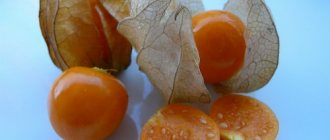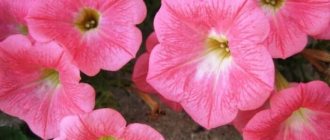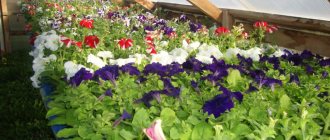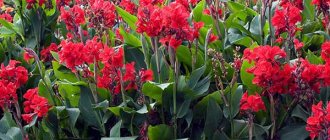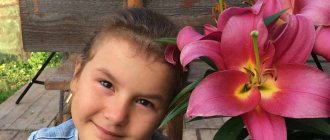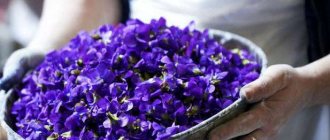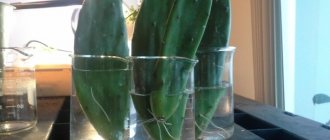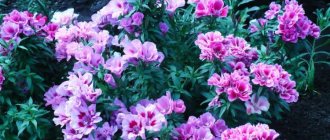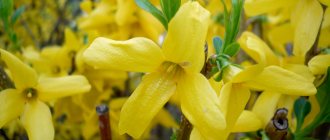For its fabulous beauty, the Oriental poppy is called the “flower of angels” by the French. Cathedrals and churches are decorated with creative bouquets on holidays, and gardens are decorated in Provence style. Motley bright spots were immortalized in the paintings of Monet, Van Gogh, and Renoir. Poppy is unpretentious in care, withstands frosts down to −40-45 degrees, and grows in a permanent place for 7-15 years.
What does a perennial decorative poppy look like?
Poppy flowers resemble bright flashes of fire
Poppy is a plant with large, straight shoots (hairy and bare), pinnately dissected and whole foliage, and a tap-type root system. The leaves have a small hairy-bristly edge. The flowers are regular in shape, with many thin stamens located on oblong peduncles.
Flower buds are usually solitary, but in very rare cases they can be collected in paniculate-type inflorescences. The petals, in most cases, are colored orange, pink, white, red, yellow. The club-shaped fruits contain many seeds. At the end of the ripening period, the seed capsule opens and the seeds scatter in different directions, far from the flower.
Note! The germination period of collected seeds is 4 years.
Which family does it belong to?
Ornamental perennial poppies (genus Papaver) belong to the Poppy family. The plant's homeland is considered to be Southern and Central Europe, Asia and Australia. In the wild, field poppy takes root well in places with cold, subtropical and temperate climates. Gardeners look at it not only as a decoration for the estate, but also as a medicinal plant.
Briefly about the history of appearance
The first mentions of poppy are found in the history of Ancient Greece. The ancient Romans, Babylonians and Egyptians considered it a garden flower and grew it as a remedy for evil spirits and a symbol of fertility. The seeds of the plant were used as a sleeping pill, and the petals were filled into brides' shoes and used for fortune telling. A description of this culture is found in ancient treatises dedicated to the Persian Paradise and the biblical Eden.
Plant characteristics
Blooming decorative poppies
The flowering period begins in April, May or June. The fruits of some crops ripen in July, some varieties bear fruit in August. The large flowers of decorative poppies contain large quantities of pollen. Another sign of decorativeness is the rapid shedding of petals. Opening early in the morning, they fall off in the evening.
The faded flower forms an elongated capsule with jagged edges and many small seeds inside. If the owner’s plans include collecting seeds, the boxes are not touched and left to ripen.
Important! The rhizome of an adult plant grows quite deeply and tenaciously into the ground, so mature crops do not tolerate transplantation to a new place. To avoid damaging the root, many gardeners grow poppies in a permanent place for several years.
Decorative poppy seeds are very small and for this reason they are sown after first mixing them with river sand in a ratio of 1:5. This trick is rarely justified and the hatched seeds have to be thinned out. The distance between seedlings should be at least 5 cm. When thinning poppies a second time, gardeners increase the distance to 20–25 cm. Ignoring this stage leads to plants growing too long and frail.
The petals of the plant are rich in vegetable fats (no more than 44%), organic acids, glycosides and flavonoids.
Benefits and harms
Doctors who lived almost 4 centuries ago spoke about the beneficial properties of poppy. In folk medicine, certain parts of the plant are used as a sleeping pill, analgesic, anti-inflammatory and expectorant. In ancient times, a decoction of it was used to destroy warts and cure fever and swelling of the joints. Poppy seeds are still used to make confectionery and dressings. Poppy flowers contain vitamin C.
The milky secretions from unripe capsules have long been considered a particularly valuable product. This peculiar juice is used to prepare painkillers and cough medicines.
Collecting poppy pods
The genus Papaver includes more than a hundred species of poppy, some of which are dangerous to humans due to their high content of psychotropic and narcotic substances. Poppy is widely known as a source of opium, morphine, codeine and papaverine. The first two components are considered drugs that cause persistent addiction. In medicine, opium and morphine are prohibited from being prescribed to patients suffering from acid starvation of the blood, those undergoing treatment for emphysema, bronchial and liver diseases, and alcohol and drug addiction.
Important! Poppy seeds, contrary to popular belief, are not a narcotic drug. They have a mild hypnotic effect and are not recommended for children under 2 years of age or the elderly.
Benefits for the human body
Despite the fact that the history of poppies is denigrated by narcotic drugs, not all of them bring only harm to the human body. There are many properties that are beneficial to humans. First of all, strong painkillers and sleeping pills are synthesized from its milky juice, which help alleviate suffering from insomnia and cancer. The seeds are used as a confectionery topping. Probably, many in childhood tried to taste fruits with black seeds, but did not know that they become truly tasty after full ripening and heat treatment.
About half of the seed is occupied by vegetable fats, the second part is: calcium, sugar, magnesium, phosphorus and other useful substances. The special composition turns ordinary planting material into a tasty and nutritious treat. It is known that poppy seeds are used in the manufacture of not only confectionery delights, but also for medicines that help get rid of digestive problems, insomnia and improve the functioning of the respiratory tract and breathing.
Classification of popular perennial poppy species
Shrub rose in a pot - can it be grown at home?
Poppy is one of the most vibrant flowers. Until relatively recently, it served as a decoration for gardens, orchards and fields. The flowering period begins in the first days of summer. Today, most gardeners do not dare to plant them on their plots for fear of attracting the attention of drug addicts. Only some species containing minimal amounts of narcotic substances are actively cultivated. All poppies do not tolerate frequent transplants.
Oriental perennial or Turkish poppy (Papaver orientale)
Tall (up to 90 cm) perennial. It reaches a meter in diameter. The foliage is beautiful, pinnately dissected, coarsely hairy. During the flowering period it is covered with single, large double, semi-double and single flowers. It can be distinguished from other poppies by large black spots in the inner part of the flowers and stamens with the same coloring. Different types of oriental poppy may differ in flower shape and color.
A rosette of leaves is formed in May, and flowers appear in June-July. In August, the foliage dries out, and after the end of the flowering period, a small box forms in place of the flower. By September, the leaf rosette may form again, and in some cases the flowering period is repeated, but full-fledged flowers rarely appear.
Alpine (Papaver alpinum)
A variety of alpine poppy
The shortest and short-lived perennial that renews itself by self-seeding. The maximum height to which alpine poppy can grow is 30 cm. It blooms earlier than other poppies - in May-June. The maximum lifespan of one plant is 3 years. It blooms mainly with white and yellow flowers, the diameter of which can reach 5 cm. It takes root well in rock gardens.
Important! Alpine poppy is picky about soil, preferring well-drained limestone.
Hollow poppy (Papaver nudicaule) or saffron poppy (Papaver croceum)
A short-lived perennial (maximum lifespan is 3 years), which reproduces well by self-sowing. The bluish foliage of the plant is collected in a rosette. The maximum height of peduncles is 30 cm, the diameter of flowers is 5 cm. It blooms in white, yellow, orange from May to September.
Poppy (Papaver rupifragum) or Spanish poppy (Spanish Poppy)
A perennial plant, it is widely known among gardeners due to its long flowering period (blooms all summer) and dense foliage of a silvery hue. Needs regular removal of dried inflorescences. Blooms most abundantly in June.
Varieties of perennial poppies that are most popular among gardeners
Garden poppy is an ornamental plant and very beloved by gardeners. It is often used to decorate cottages and park areas.
Beauty Queen
Money tree - what it looks like, can it be kept at home?
During the flowering period, it is abundantly covered with saucer-shaped flowers of a light orange hue. The maximum height of the peduncle is 90 cm.
Black and White
The flowers are showy, corrugated, white, large in size. The core is black.
Blue Moon
The height of an adult bush is almost 100 cm. It blooms with large pink flowers. The petals have a slight bluish-blue tint, and there is a black spot at the base of the inflorescence.
Cedric Morris
It blooms with large, delicate purple flowers with a black spot in the middle. Petals are corrugated. The approximate height of the peduncles is 80 cm.
Additional Information! Large flowers of rich colors go well with relatives and other plants.
Kerlilock
During the flowering period it is covered with orange, slightly drooping flowers. There is a black spot at the base of the petals with a jagged edge. Peduncles grow up to 70 cm.
Allegro
Oriental poppy Allegro
Blooms with orange-red flowers collected in rosettes. Peduncles can grow to a height of 70 cm.
Garden Glory
One of the most decorative varieties of oriental poppy. Known for its soft pink flowers with a dark center. Petals are corrugated, terry. The maximum height of peduncles is 80 cm.
Mrs Peri
During the flowering period, it is covered with medium-sized pink flowers, in the central part of which there is a black spot. The height of the peduncles is about 90 cm.
Pettis Plum
Blooms in May. Plum colored flowers. The maximum height of peduncles is 70 cm.
Caryn
With the onset of the flowering period, it becomes covered with salmon-pinkish, small saucer-shaped flowers. They are located near the leaf rosette. Peduncles grow 60 cm high.
Popscale
It is a bush up to 25 cm high with powerful, stable peduncles. Bright flowers reach 10 cm in diameter.
Cardinal
Holostem poppy variety. A bushy plant up to 40 cm high. The variety owes its name to scarlet flowers, which at the height of the flowering period reach a diameter of 6 cm.
Sulfureum
Bush up to 30 cm high. The diameter of the bright lemon-colored flowers is approximately 6 cm.
Atlant
A low-growing bush that grows to a height of 20 cm. The diameter of the flowers is 5 cm. It blooms with white and yellow flowers.
Roseum
During the flowering period, bushes 40 cm high are covered with pale pink flowers with a diameter of about 6 cm.
Popular types of annual poppies
Money tree - can you keep it at home, what does it bring, can you give it away?
Annual poppies are not afraid of cold weather, so many gardeners sow them in late autumn or early spring. Shoots appear 10–15 days after sowing the seeds in open ground. Seeds collected after the end of the flowering period can be stored for up to 4 years without loss of germination.
Important! Annuals prefer well-lit, fertile garden areas containing lime.
Soporific poppy (Papaver somniferum), or opium poppy
The flowers, reaching a diameter of 9–10 cm, can be colored, depending on the variety, lilac, pink, purple, white, lilac or red. Some specimens have black or white spots at the base.
Hybrid (Papaver hybridum)
Hybrid poppy variety
It reaches a height of 30 cm. During the flowering period it is covered with rare, dark red 4-leaf flowers with a black core.
Samosa poppy (Papaver rhoeas)
Grows to a height of 60 cm. The basal foliage is serrated, pinnately divided. The stem foliage is tripartite, with pinnately dissected lobes. Both the foliage and stem of the plant are coarsely hairy. During the flowering period (from June to September) it is covered with simple or double flowers with a diameter of 5–7 cm, pink, purple, salmon or white. Some varieties have a dark spot at the base of the petals.
Peony poppy can be considered one of the tallest annuals. The height of some species reaches one meter.
Zinnia
This fast-growing flower can reach a height of 90 cm. There are many varieties whose flowers are distinguished by their variegated colors, shape of buds and petals. This is a heat-loving crop, so it can be sown in open ground only in consistently warm weather.
Zinnia retains its decorative effect even with a long absence of water, but it can get sick. Water the plant carefully, avoiding water getting on the petals. After flowering, which lasts all summer, it produces a large number of seeds that can be collected and sown next year.
What flower crops have you prepared for planting in May?
How perennial poppies reproduce
The key to lush and long-lasting flowering of the decorative perennial poppy is proper planting and care. A perennial can grow in one place for 10 years or more, but experienced gardeners replant it once every 5–7 years. The plant can be propagated by seeds, seedlings and dividing bushes.
Note! If the gardener plans to transfer an adult plant to a new place, he must thoroughly clean the former “place of residence” of the poppies, removing even tiny pieces of rhizomes. The remains of the plant will germinate easily and will soon spread throughout the area.
Growing from seeds
One of the most popular methods of plant propagation. To ensure that the seed dissipates on its own, flower growers leave fruit boxes on faded plants. Self-seeding will occur next year. Most gardeners prefer to collect seeds and sow them by hand.
The seeds are scattered over a previously dug area and lightly crushed with loose soil. If the seed is buried too deeply in the soil, it will not have enough strength to germinate.
Time to board
The crop can be sown in spring and autumn. Autumn sowing is carried out in previously prepared soil. Stratification is useful for seeds, so in regions with a mild climate it is advisable to carry out work in the fall. Spring sowing in open ground is carried out early, before the onset of stable heat.
It is best to plant adult perennials in May or September, before or after the flowering period.
Selection of capacity
Germinating poppy seeds
Seeds do not have to be sown immediately in open ground. In early spring, they can be germinated in a plastic tray, a peat cup or a special “tablet” filled with a nutrient substrate. The seeds are scattered over the surface of the soil, lightly pressed into the ground and covered with polyethylene. When the seedlings sprout, which will happen in 14–15 days, they will need coolness and good lighting.
Preparing soil and seed
Both neutral and slightly acidic soil are suitable for sowing. It is desirable that the soil is light and crumbly, loamy or sandy loam. Having matured, the flower can develop safely in any soil.
The crop can survive for a long time without watering, but the lack of moisture will certainly affect the quality of flowering. With abundant watering, stagnant water can damage the root system of the plant.
The soil intended for planting must be fertilized with humus at the rate of 5–10 kg per square meter. Feeding with minerals will also be required. 30–50 g of fertilizer must be added to each square meter of land. The fertilized soil is dug up by plunging the shovel into the soil to a depth of 30–40 cm.
Note! Seeds are collected after the leaves of the plant wither or turn yellow, and the capsule dries out and cracks at the base of the cap (small holes should form between the base and the cap). Seeds ready for planting acquire a dark gray, almost black color.
Sowing all types of poppies requires compliance with the following rules:
- do not allow water to stagnate;
- Do not plant seeds in places with close groundwater.
Seedling care
The beds with hatched seedlings are fed 1-2 times during the season. The soil in which poppies are planted must be regularly loosened (while simultaneously removing weeds), ensuring air flow to the rhizomes, and mulched (preferably with peat).
Dive and transfer
poppy seedling
After the formation of the 2nd true leaf, the seedlings are dived, trying not to damage its parts. The plant does not like transplants and will die if handled carelessly.
Planting in a permanent place is carried out after the appearance of the 5th leaf. The culture is dug up along with a lump of earth and carefully transferred to a new place.
Additional Information! Some varieties bloom in the year of transplantation, some - 2-3 years after sowing the seeds.
Dividing the bush
The bush is dug up along with a lump of earth and divided into several parts. Given the fragility of the rhizome, this work must be done very carefully. Parts of the flower are immediately transplanted into pre-prepared holes. The permissible distance between the two nearest holes is 50–70 cm.
Landing
They immediately try to plant the oriental poppy in a permanent place under the sun with suitable drainage. You can choose slightly shaded flower beds with a nutrient mixture. The bushes do not tolerate replanting well.
Planting material from agricultural stores is plots of rhizomes. Wrap in moistened moss and keep in the refrigerator at 4-5 degrees. The kidneys must remain free. Before planting, inspect, remove damaged areas, and powder the sections with crushed coal. Planted in the ground at a temperature not lower than 12 degrees. The optimal distance between poppies is 60-80 cm. Carefully straighten the roots so that there are no bends. Flower beds are located in open sunny areas. Light shading possible. Choose flower beds that are not flooded with water in the spring and are not blown by strong winds. The area is plowed or dug deep, and the following fertilizers are added:
- 1 bucket of humus;
- 20 grams of superphosphate;
- 10 grams of potassium sulfate;
- 1 tbsp. l. ash.
Features of garden care
The tops of large specimens at the beginning of the flowering period will be weighted with buds, so they will need support. To tie poppies, it is recommended to use wide ribbons made of natural fabrics, since thin or nylon ropes can easily damage the stem.
After the flowering period is over, the dead parts are cut off at ground level. The seeds are collected after the fruits ripen.
Young plants need special care - they need to be watered frequently. The divided bushes should spend the first winter under cover of dry leaves and spruce branches. In the future, plants will be able to overwinter without shelter.
Poppy can withstand frosts down to -40°C. Mature bushes do not require additional shelter for the winter, but the safety of rare varieties should be taken care of; they should be covered with dry leaves for the winter.
What conditions do poppies like?
Perennials such as oriental poppy prefer loose, sandy loam soil in which water does not stagnate. If the soil is deprived of nutrients and its acidity is increased, the flowers will become smaller every year. The most suitable place for planting is areas flooded with sunlight. The plant will not disappear in the shade either, but the buds will set worse.
Important! Some crops, when planted in shaded areas, refuse to bloom.
What is the plant afraid of?
In general, poppy is an unpretentious plant, but in order to achieve abundant and long flowering, the gardener must water the beds on time, trying not to flood them. The plant is afraid of both prolonged drought and stagnation of water.
Watering
It can go without watering for a long time, but the lack of moisture affects the quality of flowering. With abundant watering, stagnant water can damage the root system of the plant.
Mulching
Poppy in the garden
The land in which poppies grow is mulched with peat, but in the absence of peat, you can use any mulch. Mulching relieves the gardener of the need to regularly water the beds and get rid of weeds.
Loosening
Loosening must be carried out before sowing poppies and in the process of caring for adult flowers. The earth is loosened to a depth of 3 cm.
Feeding
Feeding is provided by humus and minerals. The first is scattered over the land in such a way that for each square meter there are 10 kg of fertilizers. Minerals are distributed in such a way that there is at least 30 g per 1 square meter.
Transfer
The flower is replanted carefully so as not to damage the root system. They dig it up together with a lump of “native” soil and immediately transplant it to a new place. The recommended minimum distance between the two closest plants is 50 cm. It takes root well in places where large-leaved hydrangea (hydrangea macrophylla) was previously grown.
Shelter for the winter
Oriental poppy is cold-resistant, can withstand frosts of 40 degrees and usually does not need any special shelter. However, the departure of one-year-old, fragile shoots before winter causes concern among gardeners, so a simple shelter in the form of spruce branches will come in handy.
With adult plants, they do this: cut off their above-ground part, giving the poppy the opportunity to remain dormant. By the beginning of autumn, it will have a new leaf rosette with which the poppy will overwinter. It is advisable to mulch (for example, with compost) to help the plant better survive the cold period.
When and how does it bloom
The flowering period for most poppies is throughout the summer months.
Types of flowers
Many experienced gardeners and hobbyists plant the following species on their plots:
- Oriental;
- holostem.
Flower shapes
Oriental red poppies have 4–6 petals, almost round in shape. The petal length is about 9 cm. Their color varies from orange-fiery red to pink-red. There may be a black, almost square spot at the base of the petals. The stamens are dark, slightly widened at the top, and the anthers are oblong and purple in color.
The flowers of the poppy can be yellow, orange, and sometimes white. The diameter of the obovate, simple or double petals reaches 6 cm.
Additional Information! The stamens emit a subtle aroma.
Flowering period
The flowering time of the oriental poppy is June–July. The holostem poppy blooms in May and blooms until autumn.
Changes in care during the flowering period
Caring for flowering plants comes down to moderate watering and removing weeds (in the absence of mulch).
Raffles Miss Piggy
This perennial oriental poppy will be the best background for bush aster, cornflowers, and oregano. irises, delphiniums, nivaria, yarrow. Snow-white double flowers with a dark center will never get lost in group plantings and will help other plants demonstrate themselves in all their glory. The variety is suitable for decorating rockeries and mixborders, as well as for cutting. A bouquet of large white poppies is a symbol of goodness and pure intentions.
Possible problems in growing
Poppies are not able to fight some infectious diseases and garden pests. For preventive purposes, plants are irrigated with preparations that contain copper: Bordeaux mixture, copper sulfate (copper sulfate), contact fungicide (Maxim), systemic fungicide (Topaz). Prevention is carried out before the flowering period.
Pests
Poppy sneaker
Poppy secretive proboscis and other beetles from the weevil family love to settle in the root system and leaves of poppies. It is extremely difficult to detect them - upon sensing the approach of a person, insects fall to the ground, merging with lumps of soil. Gardeners recognize their presence by external signs: the affected plant stops growing, and its lower foliage turns yellow and dies.
Pest control consists of spraying with 0.2-0.35% chlorophos: 2-3 treatments with an interval of 10 days are sufficient.
Diseases
Crops cannot resist the formation of powdery mildew and black fungal spot.
Signs of improper care
Before or after sowing seeds, the soil must be treated with insecticides. If this is not done, pest beetles may settle in the root system and on the lower foliage. Soil treatment with 7% chlorophos or 1.6% phosphamide on granulated superphosphate (10 g per square meter) can be carried out even after the seeds have sprouted.
Poppies planted in a too shaded part of the garden practically do not bloom due to the slow setting of flower buds. The absence of flowers may be a sign of improper care: although the plants are considered unpretentious, they periodically need watering, weeding and mulching.
Sowing technique
Having chosen a permanent place for poppies, prepare a place for sowing seeds. The soil is loosened, stones and roots of various plants are removed. To provide nutrients for future plants, organic fertilizers, humus or compost are added to the soil.
Sowing seeds in autumn
The prepared soil is divided into furrows up to 3 cm deep, at a distance of 5-10 cm from each other. Add the seeds and cover them with soil. Do not plant poppy seeds in the soil, as a large layer of soil may prevent them from germinating. They simply do not have the strength to break through to the surface. The seeds will “wake up” as soon as the snow melts and the soil warms up to 3-5 degrees.
Sowing seeds in spring
As soon as the snow melts and the soil temperature becomes slightly above 5 degrees, the seeds are placed in the prepared soil. If necessary, you can make furrows or simply scatter the seeds over the surface of the ground, sprinkled with a small layer of sand. When planting poppies in the spring, cover the soil with cellophane to create a greenhouse effect. Shoots will appear in 10-14 days, during which time the soil should be kept moderately moist.
As soon as sprouts appear, remove the greenhouse. Protect young plants from direct sunlight. In spring the weather is very unstable and frosts are possible. In such cases, cover the young plants with film or other covering material.
To avoid overgrowing, space the seeds far apart. Otherwise, the seedlings will have to be thinned out when the second leaf appears.
Use in landscape design
Designers use poppies to decorate green lawns and flower beds. They get along well with ornamental cereals, delphinium, Chinese chrysanthemums, mantles, geraniums, cinquefoil, milkweed, all lilies, cosmos, tobacco and lavatera.
Many amateur gardeners are concerned with the question: is it possible to grow poppy in the country? The law prohibits the widespread cultivation of poppy (Papaver somniferum), oriental poppy (Papaver orientale), bract poppy (Papaver bracteatum) and bristlecone poppy (Papaver setigerum). Experts do not recommend gardeners to cultivate all types of poppy with too large seed pods - these are the ones that pose the greatest danger.
